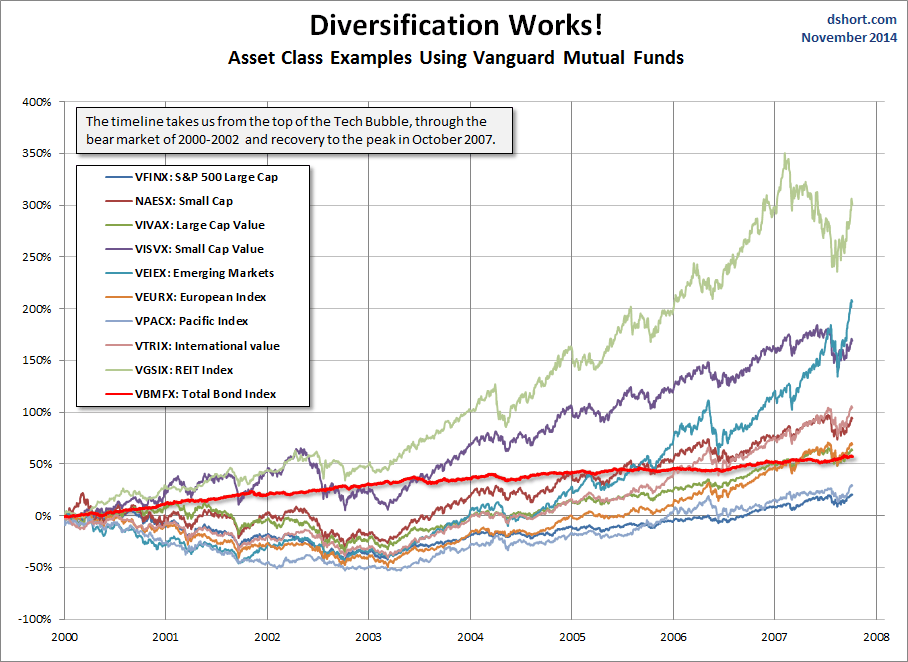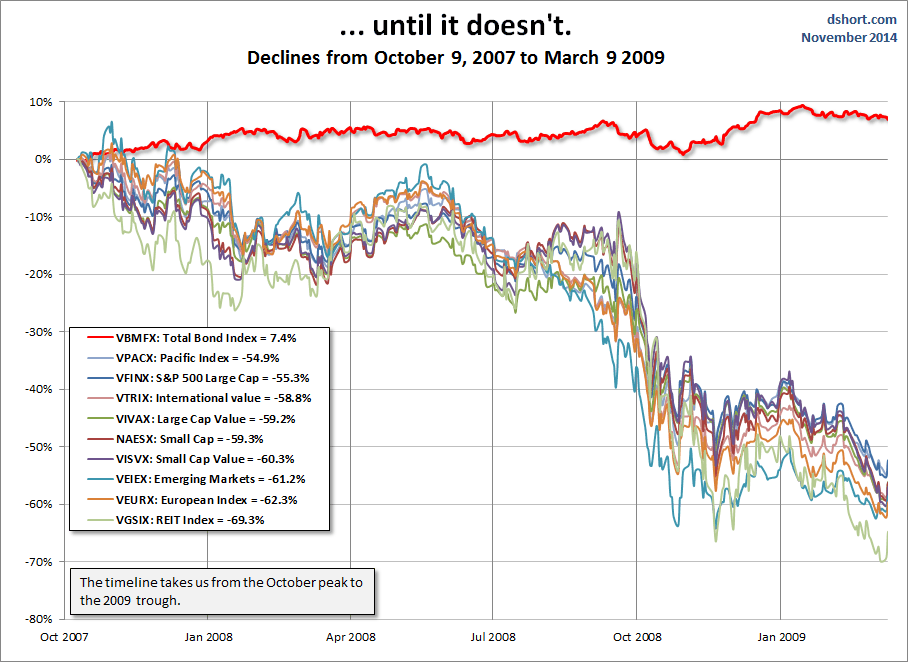In recent days major US stock indexes have been repeatedly hitting new highs. The S&P 500, for example, closed out October at a record level and since broken the record on eight of the past 12 sessions so far in November. Despite the market success, investor participation has been scarcely exuberant. Volume in the SPY ETF has been running well below its 50-day moving average all month, as this snapshot illustrates.

The steady advance in equities has also been accompanied by a frequent theme in the popular financial press: Anxiety about a major market selloff. The resiliency of the current market anxiety is, I think, largely attributable to memories of the uniform behavior of virtually all asset classes during the Financial Crisis.
Diversification is a cornerstone of Modern Portfolio Theory and risk management. We spread our investments across a range of asset classes, rebalancing periodically, to ensure participation in the upside and reduce exposure to the downside. This is a time-honored strategy that works … most of the time. But during the epic market downturn of the Financial Crisis, equity asset classes essentially marched in step to the same dismal drumbeat.
A few years ago at conference of the Retirement Income Industry Association (RIIA) I made a presentation that included some charts on diversification. My theme was Diversification Works! … Until It Doesn’t.
I’ve now created some updated versions. The first uses ten Vanguard mutual funds to illustrate the cumulative percent change in a wide range of asset classes from the turn of the century to the market peak in 2007.


Here are the same funds over the 17-month timeframe from October 9, 2007 to March 9 2009. Aside from the Total Bond Market fund, diversification didn’t fare very well. The performance for the other nine asset classes sold off in relative unison, untimely losing between 54.9%% and 69.3%.















Leave A Comment